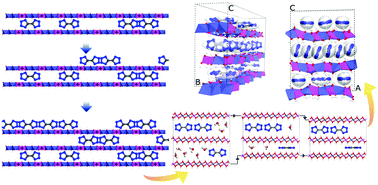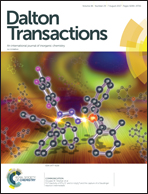New insights into the interstratification phenomenon in layered double hydroxides (LDHs): a comparison of experimental and computational results for ZnAl-LDH containing bis-tetrazole
Abstract
In the present paper, successful preparation of ZnAl layered double hydroxides (LDHs) containing bis-tetrazole anions with both typical and interstratified arrangements is reported. The mechanism of the single-anion interstratified arrangement remains a long-standing and overwhelming challenge in the chemistry of LDHs. To address this issue, the arrangement of layers, the positioning of anions in the interlayer space, and the cationic ratio of layers were studied by the application of a series of laboratory methods including X-ray diffraction (XRD), thermal analyses (TGA, DTG, and DTA), elemental analysis (CHN), and energy dispersive X-ray (EDX) methods, together with computer simulations performed by using Dmol3, Forcite, and Reflex modules. The obtained information demonstrated the dependence of interstratification on the type, size, and charge distribution of the intercalated anions, and the cationic ratio of the LDH layers. At the end, a new comprehensive mechanism is proposed for single-anion interstratification in layered double hydroxides by considering the results of this research study and other related works.



 Please wait while we load your content...
Please wait while we load your content...